What are the Differences Between Infant, Child, and Adult CPR?
- Nov 11, 2019

Learn the Pediatric Chain of Survival and Discover the key differences between Pediatric and Adult CPR.
We’re the first to admit that the idea of performing cardiopulmonary resuscitation (CPR) on an infant or child is pretty scary. Although all of us here at AED.com hope that you’ll never be called upon to perform CPR on a child, it’s important to understand the very significant differences between the three types of CPR.
Because a child’s physiology, musculature, bone density, and strength are different from an adult’s, CPR is performed differently. In fact, if adult CPR is performed on a child, it could do more harm than good.
Pediatric Chain of Survival
Earlier this month, we discussed Why the Chain of Survival is So Important, and in this post, we’ll cover not only the differences between adult and pediatric CPR, but also the differences in the Chain of Survival for adults and children.
The Pediatric Chain of Survival is a sequence of events this is most likely to save the life of a young victim of sudden cardiac arrest (SCA). Unlike the adult Chain of Survival, which begins with early recognition and call for emergency assistance, the pediatric Chain of Survival dictates that high-quality CPR start immediately. This is because children are more likely to suffer from SCA caused by an obstructed airway or shock, so it’s important to be able to recognize and prevent respiratory problems or cardiac arrest before they occur. Only after performing CPR for a full two minutes should the rescuer then call 911.
The Pediatric Chain of Survival consists of:
-
Prevention of Cardiac Arrest
-
Early, High-Quality CPR
-
Rapid Activation of the Emergency Response System
-
Effective Advanced Life Support
-
Integrated Post-Cardiac Arrest Care
(Source: American Heart Association)
An Overview of the Three Different Types of CPR
Adult CPR
If you’re ever called upon to perform CPR on an adult, call 911 immediately before starting CPR. Check for a pulse and then begin CPR with chest compressions. If you’re not CPR-certified, a 911 operator can guide you through hands-only CPR. Push hard and fast on the center of the chest at a rate of 100-120 compressions per minute.
The compression depth for adults should be at least two inches and the chest should recoil completely between compressions. If you are CPR-certified, remember to use the ratio of 30 compressions to two rescue breaths. Use an AED if one is available.
Infant CPR
Great care should be taken when performing CPR on an infant. Although a baby’s bones are more flexible, they’re also much more delicate. First, confirm that the baby is unconscious. Do not shake the baby; instead, shout and tap or flick the soles of the infant’s feet.
As with older children, you’ll want to begin CPR on an infant before calling 911. Of course, if there’s another person at the scene, ask them to call.
Check for a pulse on the inside of the upper arm and begin CPR immediately if you’re not able to detect a pulse. When providing rescue breaths to an infant, gently tilt the head so that the baby’s nose appears to be sniffing the air — this is known as the “sniffing position.” Do not tip the head back too far! Be very gentle when providing rescue breathing; don’t use the full force of your lungs to expel air. Instead, use your cheeks and puff air into the infant’s mouth and nose.
When providing compressions, use two fingers at the center of the baby’s chest. Compressions should be about an inch and a half deep at a rate of 30 compressions to two rescue breaths.
If an AED is available, apply pediatric pads and use it after five cycles of CPR. According to the American Red Cross, you may use an AED configured for an adult if pediatric settings or pads are not available.
Child CPR
Pediatric resuscitation protocols apply to infants less than 1 year of age and children up to the age of puberty or those weighing less than 121 pounds (Merck Manuals).
Although CPR for children is very similar to adult CPR, rescuers should start CPR before calling 911. If you’re the only person around and you need to make a choice between starting CPR and dialing 911, go for the CPR! Typically, children are more resilient than adults and their chances of survival are much higher if you begin CPR immediately.
After two minutes of CPR with rescue breaths, call 911. Because a child’s airway is more fragile than an adult’s, use caution when providing rescue breaths and be careful not to tilt the head back too far. When providing chest compressions, use one or two hands, depending on the size of the child. The depth of compressions should be only one and a half inches. The ratio of compressions to rescue breaths, 30:2, is the same for children as for adults.
If an AED is available, apply pediatric pads and use it after five cycles of CPR.
(Sources: American Red Cross and National CPR Association)
To learn more about our CPR and AED Training or to purchase an AED with pediatric capabilities, visit aed.com or us at 800-544-0004. You can also email us at customerservice@cardiopartners.com.
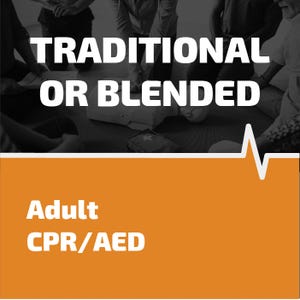
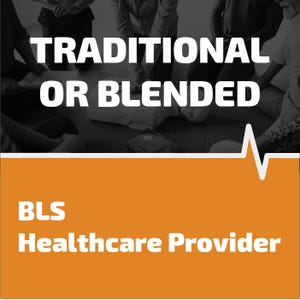
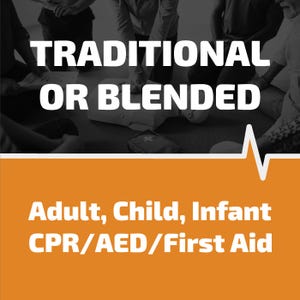





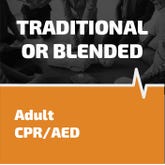
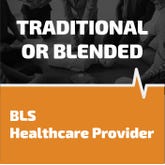

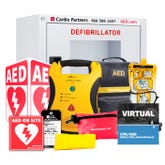
 CALL US:
CALL US: